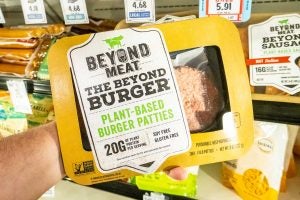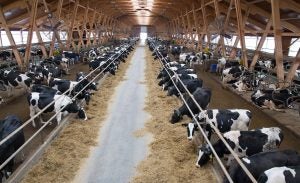The 10-year span from 2010 to 2019 was among the most pivotal in the history of the agricultural industry. From the tech boom of social media, smartphone apps, and precision imaging to the mergers between brands and large-scale lawsuits, there is no shortage of things that rocked our industry, for better or for worse. Some were specific to the livestock or crop niches, while other events rippled through ag as a whole. Here are the biggest agriculture moments of the 2010s decade and what they did for the industry.
Crops
1) Brand Mergers
Major seed and crop protection companies saw a change in industry dynamic over the past 10 years. Syngenta, Monsanto, Bayer, BASF, Dow Chemical, and Dupont were considered the “Big Six” chem companies. Several large-scale mergers were announced in the mid-2010s, but due to the concentrated market and competition between the global brands, an extensive review of antitrust laws was held by the United States, the European Union, and other governmental entities.
The major consolidations involved:
Monsanto and Bayer — The $66 billion merger of the two drug, seed and chemical companies, both part of the “Big Six,” was one of the hottest topics of discussion when it was announced in 2016, and again when it was finalized two years later. The merger resulted in dropping the 117-year old Monsanto name to help distance Bayer from anti-biotech activism and other negative publicity.
Monsanto and Climate Corp. — Prior to the Bayer/Monsanto deal, in a $930 million acquisition, Monsanto bought out farm weather insurance underwriter The Climate Corporation in 2013. This deal was done to provide Monsanto an edge into the field of data science, an emerging industry they wanted to tap into in order to help farmers increase yields.
Syngenta and ChemChina — In 2016, Chinese company ChemChina took over Swiss seed and chemical company Syngenta for $43 billion. This merger would allow China to improve its agricultural industry, which was behind global standards and was China’s largest foreign purchase at the time.
Dow Chemical and Dupont — About $130 billion was spent in the fall of 2017 to make the DowDupont merger successful. The joining of the two brands created three separate companies: Corteva, a seed and crop protection division; Dow, the material science division focused on manufacturing and industrial materials; and DuPont, the specialty products division focusing on electronics, biosecurity, and construction, among other things.

2) Rise of CRISPR
Genome engineering technology allowed scientists to easily and precisely edit the DNA of any genome — “Clustered Regularly Interspaced Short Palindromic Repeats” involves molecules present in nature for millions of years. Scientists stumbled upon them in 1987, however, recent discoveries about the specific abilities of CRISPR in 2013 changed the world as we knew it.
With the ability to manipulate and edit DNA, plant scientists were able to provide a more secure food supply through advanced genetic engineering.
3) GMO Education
Of course, the science behind this technology was, and still is, highly contentious. Modifying anything doesn’t seem safe or moral to some people, especially those working outside of agricultural production. Additionally, anti-GMO organizations, such as the Non-GMO Project, fed off the fears of consumers and promoted products that didn’t use GMO foods. The first products to be offered in grocery stores, with the infamous butterfly label, occurred in 2010.
However, organizations, such as GMO Answers, rose up from the chaos and have worked to educate consumers on the safety, and necessity, of genetically engineered crops. Today, there are a wealth of advocates on both sides, from the Food Babe blogger and researcher Charles Benbrook against GMOs to professor Kevin Folta and author Mark Lynas in favor of the technology.

4) Rise in drone technology and other precision ag developments
Precision agriculture has seen a sharp increase in the past decade. While we had things like GPS in the mid-1960s, the invention of the internet, mobile devices and advancement in technology have increased the use of precision ag adoption. It has helped make farms more efficient and more accurate, often right from the touch of your smartphone or tablet.
Drone technology was slow to rise to the top, due to mapping inadequacies and cost, but has since become a staple in the industry. Soil analysis, crop monitoring, spraying, and health assessments are only a few of the technology capabilities available with drones. While this is an instrument more farmers are willing to use, there are still concerns about privacy, safety, and training.
5) Monsanto-California lawsuits
In 2016, Dewayne Johnson filed a lawsuit against Monsanto claiming that glyphosate, the active ingredient in their weed killers, Roundup and RangerPro, gave him cancer (specifically non-Hodgkin’s lymphoma). The crux of the case hinged on glyphosate being labeled a probable carcinogen in 2015 by the International Agency on Cancer Research — findings that have since routinely been found to be misleading. The federal court ruled in favor of Johnson, stating that Monsanto had failed to warn consumers of the cancer risks. Tens of millions of dollars were ruled to be paid out in that case and a subsequent liability case, with a third netting an astounding award of $2 billion.
There have been thousands of lawsuit cases opened across the country against Bayer/Monsanto, and the debate of whether glyphosate is a cancer risk is hotly debated in mainstream and social media. Nearly all scientific bodies and associated research, however, have affirmed the safety of glyphosate.
6) Failure of state-by-state GMO labeling initiatives in the U.S.
In 2018, the USDA announced it would release food labeling requirements that clarified which products contained GMO crops.
In past years, individual states had the jurisdiction to require such a label, but mostly, this initiative failed. In California, Prop 37 was pushed to help create clarification of food products with genetically engineered crops. However, those against passing the law claimed it would further confuse consumers, allow many exemptions, and raise food costs. Prop 37 ultimately failed, as with many other states.
7) Inclement weather disasters on crops
The past decade has brought about many extreme weather events, which have had a seriously negative impact on crops and livestock across the nation. The year 2011, specifically, brought with it extreme tornadoes, drought, Hurricane Irene, and massive snowstorms that tore through the nation and caused a total loss of 24.2 billion in property and crop damages. Many people lost their homes, loved ones and livelihoods during this disastrous period.

8) Ongoing China trade war
In 2018, President Donald Trump launched a trade war with China, due to the Asian nation’s unfair trade practices and attack on American intellectual property. Many agricultural commodities suffered, such as soybeans and pork, after China retaliated with its own increase in tariffs on imports. Spilling into 2020, there was a light at the end of the tunnel, when China and the U.S. came to an agreement to lower tariffs, while China agreed to add $32 billion worth in agricultural products.
9) Sequencing of plant genomes
As noted, GMOs became a huge technology this past decade. But, the science behind genome sequencing is highly technical and has taken many years to become more accessible and affordable. Sequencing is, in a simplified explanation, figuring out the order of DNA nucleotides. Plant scientists yearn to understand how genes are ordered because this may help secure a more safe and sustainable food supply. This technology allows scientists to select crops for ideal characteristics, and prevent harmful traits from being present in a specific plant.
10) Latest Farm Bill passing
Every five years, a new farm bill is passed into law. The 2018 farm bill, called the Agricultural Improvement Act and worth $867 billion, provides funding for huge programs like the Supplemental Nutrition Assistance Program, as as for conservation, loan, and disaster programs. This bill was controversial due to Trump disagreeing with Congress over lowering the budget for SNAP and wanting to change Able-Bodied Adults Without Dependent requirements to be more strict.
This bill also reclassified hemp and has since allowed industrial hemp growing to be legal. It was signed into law on December 20, 2018.
“America’s farmers and ranchers are weathering the fifth year of severe recession, so passing a farm bill this week that strengthens the farm safety net is vitally important,” House Agriculture Committee Chairman Michael Conaway (R-Texas) said in a statement at the time.
Livestock
1) The Veterinary Feed Directive
To keep antibiotic resistance at bay, the Food and Drug Administration greenlighted the new Veterinary Feed Directive in 2015, with implementation in full in January 2017. The revisions have removed production uses for antibiotics that are medically important to humans, and veterinary oversight was now required for use of these antibiotics in animal feed. This prompted producers to forge closer relationships with their veterinarians and had some farmers and ranchers fearing heavier regulation would be detrimental to their operations. While the VFD was worrisome and might still need clarification, many producers have had positive experiences with it.

2) Creation of plant-based ‘meats’
While plant-based “patties,” “sausages,” and more have been around for decades, the replication of muscle cells in a petri dish for human consumption is a brand-new concept. One leader in that space, Impossible Foods, was founded in 2011 and spent the next few years researching and developing the Impossible Burger — a plant-based burger that revolutionized vegetarian foods and hit fast food restaurants, like Burger King, early in 2019. Other faux meat brands have emerged, such as Beyond Meats, whose products are featured in other fast-food chains, like McDonald’s. Fake meat’s meaty-like texture and claims of “authentic” flavor rose to stardom this past decade, captivating consumers and creating a lot of buzz in the food world.
With that came a push-back from lovers of real meat and from livestock and protein advocacy organizations. Disputes over how to label the “meat,” which protein source is the healthiest, and how to integrate this new product into the market are ongoing. Look for lab grown meat to have a big moment in agriculture in the very near future.
3) Loss of Country of Origin Labeling
The repeal of mandatory country-of-origin labeling for U.S. beef in 2015 was a huge blow to cattle producers. Live cattle prices plummeted following the repeal and have yet to return to pre-repeal highs. Groups such as the United States Cattlemen’s Association worked aggressively to implement and keep the program in place, but in the end, the industry lost out to its own politics in the countryside.
To this day, lawmakers and interest groups address the issue, highlighting concerns that the USDA’s qualifications do not currently require that beef be born, raised, and slaughtered in the United States in order to carry a “Product of the U.S.A.” label.

4) Dairy farm decline
This past decade has seen many closures for dairy farmers, and prior to 2009, dairy had suffered greatly. Poor milk prices for far too long have caused many to go out of business. In just one year alone, between 2017 and 2018, 6.5 percent of U.S. dairy farms were shuttered; this was due to low profitability and supply exceeding demand. Another huge factor in play is the lower demand by consumers, since alternative milk products are now available on the market. New trade policies, like the United States-Mexico-Canada Agreement, as well as deals with China, might help turn the tables and create better prices and markets for the industry.
5) Green New Deal push
Climate change isn’t a new topic of discussion, but it seems that agriculture is the main target, especially from the political angle. In 2019, U.S. Rep. Alexandria Ocasio-Cortez (D-N.Y.) and Sen. Ed Markey (D-Mass.) released a plan for drastically reducing Green House Gas emissions in the United States. Part of the deal zeroed in on emissions from cattle ranching, and the methane that’s expelled there.
Many saw the flaw in this plan, and even though it caught a lot of attention in the media, the Senate blocked the legislation in 2019.
6) Marketing and competition
The Farmer Fair Practices Rules were finally released in 2017 after seven years of USDA officials writing, soliciting comment, and rewriting the “competitive injury” rule and associated rules several times. The rule simply served as a clarification that allowed family farmers to remain protected under the Packers and Stockyards Act but was targeted by the meatpacking lobby for the supposed increase in cost to the Big Four. Efforts were also made to change the Live Cattle and Feeder Cattle Futures Contract, including working with the CME Group to add additional deliverable supply capacity to the contract.
Industry/Lifestyle
1) Social media and increase of agricultural activism
Facebook hit the social media scene circa 2004, but the platform didn’t allow for everyone to be eligible to join until 2006. Instagram, Twitter, YouTube, and others have followed in those footsteps, creating an entirely new way to communicate with the world.
These outlets have created a storm in activism, allowing those who are anti-agriculture, and those who are pro-agriculture, to garner millions of views and create discussions surrounding their views and ideas. This has created more demand for ag communications professionals and more brands to be present on the platforms, in order to advocate and raise awareness of hot topic issues, while also building relationships with consumers who get to see farm-living through social media.

2) First African-American female FFA president
Breanna Holbert was elected the FFA president for the 2017-2018 year, becoming the first African-American female to hold the role. The California State University Ag Education student is one of six African-American members to hold a national title in the history of the organization.
“It was totally unexpected, but I feel like this journey feels right,” Holbert said when she was elected. “I know my teammates and I have personalities, strengths, and actions that will make a positive difference in the lives of thousands just by being who we are.”
3) USDA decentralization
In 2019, U.S. Secretary of Agriculture Sonny Perdue announced the U.S. Department of Agriculture would relocate the Economic Research Service (ERS) and National Institute of Food and Agriculture (NIFA) to Kansas City, Missouri.
The USDA determined this move would allow more research and funding for major agricultural research, and Perdue felt strongly about the agricultural connection in the state.
However, many employees left, and critics have feared the loss of expertise could create major issues for farmers and cause research funding to be delayed.
4) National FFA celebrates 50 years of female members
As far as milestones go, this is a big one — and one that has helped nurture one of the most vital aspects of the ag industry, it’s women leaders.
Motion to accept female students into the national organization were brought up several times: once in 1964, again 1966, and then in 1968, and each time, those motions were defeated. Finally on October 15, 1969, a motion carried (by only a two-vote margin) to strike the word “male” from the FFA constitution. History had finally been made.
When the FFA began including women at the national level, it was more than just allowing female students to participate in competitive events. It also recognized women’s role in agriculture on the farm, in the workplace, and gave hope to future generations.
Markie Hageman lives in California and is an agribusiness graduate from Fort Hays State University. She is the Communications Coordinator for California Rangeland Trust and is an avid agriculture advocate. Her AGDAILY articles can be found here.
Lia Biondo, Director of Policy & Outreach, United States Cattlemen’s Association, also contributed to this article.



